by Innovation Lab Director, Adam Jespersen
MNA’s Innovation Lab has been in existence for nearly three months now. I and others have spent the bulk of our time doing what any new venture should – meet as many people as possible, listen, learn, and orient. We have interviewed more than thirty nonprofit leaders in Montana and have also spent time in conversation with consultants, business leaders, and innovation labs across the country, like the Bridgespan Group, the Creative Adventure Lab, and the Georgia Center on Nonprofits, among others.
A clear(er) picture is starting to emerge around what has worked across the country, what the need is here in Montana, and what is feasible for us to accomplish in the near and distant future as we strive to build nonprofit operational capacity. Stay tuned for more on that soon.
The task at hand today, however, is to introduce this as the first of what will become regular contributions in this space around the work of nonprofit innovation. While we will be using this space to highlight what we are working on and who we are working with, we will more prevalently be using this space to offer innovation insights and concepts for nonprofit leaders to chew on and use in their own work.
The first concept that we want to dive into is the trinity of innovation, the concepts of desirability, feasibility, and viability.
Whether we are talking about a new, innovative program, process, or system or just talking about our missions and programs in general, we should know that what we are doing and developing is desirable (do people want it?), feasible (can we do it?) and viable (can we afford it?). Or more progressively and beneficially, we should be able to answer ‘yes’ to the following:
Does this offer new, sought-after value to our community? (Desirable)
Does this fit with and enhance our current operational capacity? (Feasible)
Does this increase our fiscal sustainability or provide new revenue or efficiencies to support our mission? (Viable)
As with most things in this world, these questions and concepts become exponentially more complicated in practice than in theory, and we can find countless examples of missions, products, and services (of all sizes and in all sectors) that have missed the mark in at least one of these three areas:
Crystal Pepsi (remember that?): Easy to manufacture and just as profitable as regular Pepsi, but it actually gave consumers anxiety. Feasible and Viable, but not Desirable.
Uber: Highly desired service and operationally very effective, but it loses 58 cents on every ride it provides. Desirable and Feasible, but not yet Viable.
Tesla: Highly desired product that consumers willingly pay a premium for, but it may not be able to overcome its operational hurdles. Desirable and Viable, but not yet Feasible.
Closer to home, I’m sure each of us can look into our own missions and programs or those of our peers to find examples of where desirability, feasibility, and viability just didn’t quite come together – or where it did to amazing results. I know of two Montana youth-serving arts organizations that recently partnered to bring their services to a new geographic location. They were each able to see the unique value that the other party brought to the partnership (desirability) and they have been able to structure their partnership in a way that was both operationally feasible and fiscally viable for both parties.
The next three posts written in this space will be devoted to these three concepts – desirability, feasibility, and viability – what they mean, how they are measured and analyzed, and how to think through them in your own organizational context.
Learning to see through these lenses for all of your programmatic and operational decisions is a wonderful building block for becoming more innovative, impactful, and efficient in all that you do.
Until next time!

